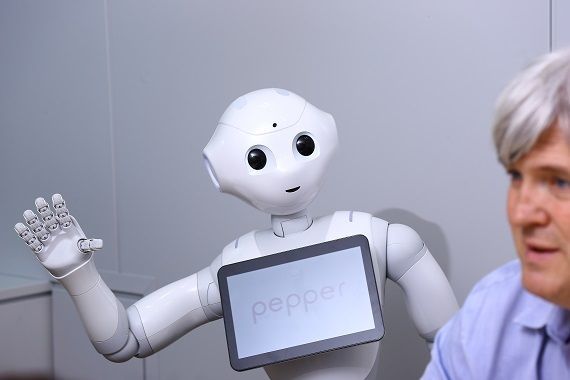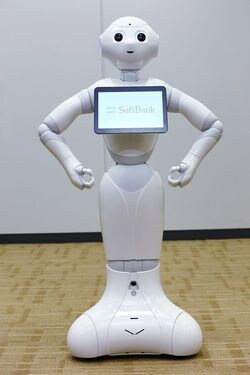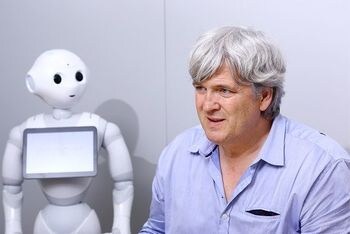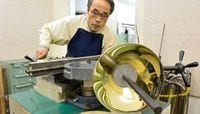
“It’s been a dream of mine since when I used to watch Astro Boy on TV.” SoftBank CEO Masayoshi Son was onstage, speaking at the unveiling of humanoid robot “Pepper” on June 5. It’s said to be the world’s first emotionally-aware robot, designed primarily for communication. Pepper has already been greeting and interacting with visitors to SoftBank’s Ginza and Omotesando stores in Tokyo, and will go on sale for 198,000 yen ($1950) from February 2015.
Pepper was developed by SoftBank subsidiary Aldebaran Robotics, a cutting-edge French company that has previously marketed humanoid robots in 70 countries around the world.
At 55, the company’s founder and CEO Bruno Maisonnier is one year younger than Son. With a background in high-tech companies and financial institutions, he brought a distinctive combination of skills to setting up Aldebaran. It was three years ago that he met Son. Son immediately decided to invest. Following subsequent further investments, SoftBank now holds a 78.5% stake in Aldebaran. Maisonnier spoke with us.
Tanabe How did you come to form a partnership with SoftBank?

Maisonnier We had already developed and marketed our humanoid robot “Nao.” We were thinking about what to do in order to expand the market further, and one thing that was of interest to us was telecommunications. So we were exhibiting at telecom trade shows in the Asian region and so forth. Well, it seems Mr. Son had long had a dream that he wanted to make a reality. So he had set up a special team at SoftBank to look at robot companies around the world. I think initially Mr. Son was considering a minority shareholding. As it happened, when we met, we found that we not only had a similar vision, but we also hit it off on a personal level as well. It was supposed to be a 90-minute meeting, but in the end we talked for eight hours, and the investment was decided on that same day. Mr. Son had a definite idea of what he wanted, and seemed concerned about whether we were really the company to make it a reality.
In the end, though, our own vision and the robots that we were actually making were close to what Mr. Son had in mind, I think, so everything went well. In fact, I feel that our ideas for business development are similar to SoftBank’s.
In the development of Pepper, members of Softbank’s product division were involved and provided support for quality improvement. It’s mainly the business that I’ve been discussing with Mr. Son. As for product development, I think he has had some input in the area of emotion recognition.
Tanabe What have the Nao robots been used for?
Maisonnier We’ve sold over 5,000 of them in 70 countries around the world. They have been used in research, in programming and informatics education settings and, on an experimental basis, in foreign language education. They have also proved useful as an aid in the education of autistic children, among other things.
Really, it’s communication and the interplay of feelings that is crucial. We didn't consider anything other than humanoid forms. Other approaches would be to use animal forms like a dog or a cat. But we considered the humanoid form necessary for communication because, apart from being endearing, it can convey feelings by means of body language.
Pepper embodies about 200 underlying technologies. Sophisticated speech recognition, motors, various types of sensors, video processing technology to detect a smile, and technology for recognizing emotions are just some of them. To integrate all these technologies and make them work together was really hard. On the other hand, you could say that integration of the technologies forms an entry barrier.
Development accelerating steadily

Tanabe How rapidly will robots come into widespread use among the general public?
Maisonnier It will proceed very quickly. There are many engineers who want to develop applications for robots. However, until now, there hasn't been a robot that could be used as a platform, so even if they wanted to develop, they couldn't. In other words, speech recognition, technology for detecting a smile, musical performance capabilities, etc. — each of these existed only in its own specialized area.
Even if it's not perfect, as long as you have a platform, improvement in each of these parts can proceed, and the robot can become more and more complete. That sort of development is now going to increase explosively, exponentially. When Pepper goes on sale in February 2015, various people are going to use it, and the development process will accelerate. So who knows? In one year's time, you too might be sharing your life with Pepper.




